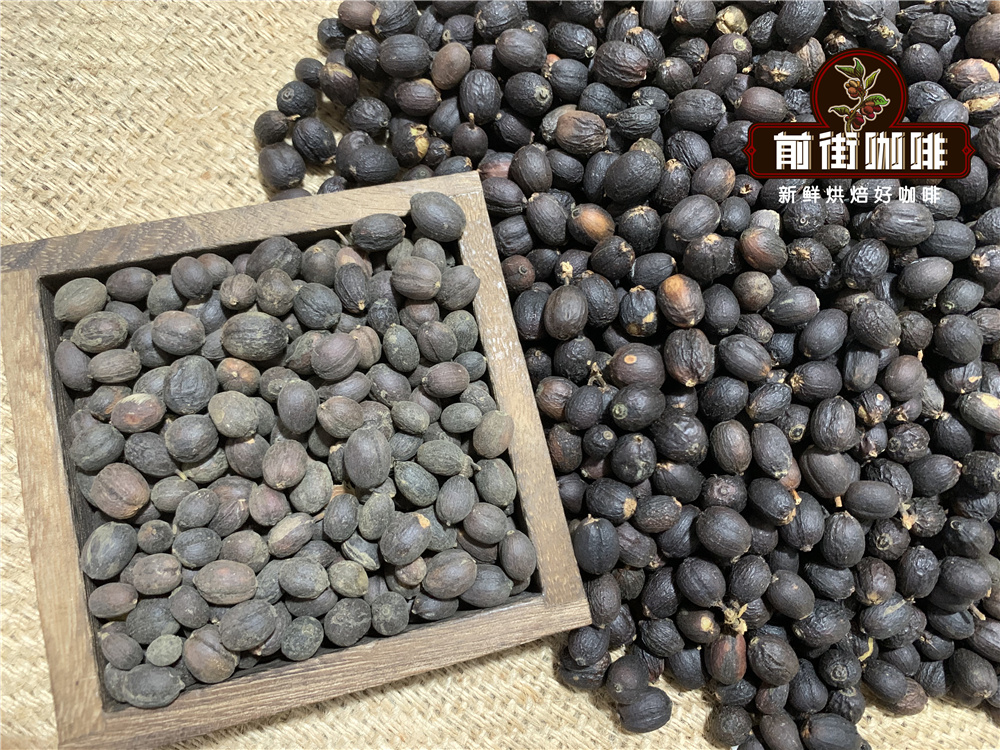A brief introduction to the treatment method of grinding degree and baking degree of Yemeni coffee mocha coffee beans with unique flavor and complete grain shape

There are many varieties of Yemeni coffee, most of which are named after their origin and type, with different flavors, such as fresh wood, tobacco, musk, fruit wine, roasted nuts, cocoa and warm seasonings, especially Moha coffee. At present, Yemeni Moha coffee is most famous on the market, such as Isemary, Matari, Sanani and other varieties. Sanani coffee has medium bean size and fruit wine flavor. Produced in Sana'an and surrounding areas Matari coffee originates from and around Mattar in the west of Sana 'a. it is the best-known moha coffee with unique flavor. Coffee beans have chocolate color, complete grain shape, fruit wine and seasoning flavor. Isimarie coffee is the rarest variety of Moha coffee, produced in the highest altitude of Yemen, the output is very limited, the price is expensive, but there are fruit wine, spices, nuts, malt and other flavors, the quality is higher than the Matari and Sanani coffee, is the best coffee in the world. In addition, Xilazi and Zamarni are also famous coffee brands, which are produced in the high mountains along the Sana'a-Hodeida highway and in the Zamar region.
Yemeni Moha coffee beans are small and heavy, which is an important feature that distinguishes coffee from Caribbean and Ethiopian coffee.
In recent years, due to the deterioration of natural conditions and man-made reasons, such as water shortage and the occupation of resources planted by Carter, the development of Yemeni coffee industry is relatively slow. How to further consolidate and develop the coffee planting industry and reshape the glory of Yemeni coffee in history is an important issue for the development of Yemeni agriculture.
Coffee has been Yemen's traditional export product for hundreds of years, and it is still one of the most important cash crops and export products in Yemen. Statistics show that among the top 30 commodities exported by Yemen in 2000, cooked coffee beans, raw coffee beans and coffee shells ranked second, eighth and 21st respectively, with a total value of about US $17.5 million, of which raw coffee was about US $12.25 million. The planting area of coffee was 2. 5% of that in 1995. The number of hectares increased from 70,000 hectares to 3,000 hectares in 2000. The output increased from about 9000 tons in 1995 to about 1 in 2000. 20,000 tons, with an average of 0 per hectare of real estate coffee. The output value of coffee in 2000 was 3 billion rials, or about 19 million U.S. dollars.
Yemeni coffee originated from Arabian coffee trees hundreds of years ago, all of which are produced in areas above 3000 feet above sea level. For hundreds of years, the unique planting and production methods of Yemeni coffee have remained almost unchanged. The seedlings of Yemeni coffee trees are first cultivated in nurseries and then transplanted to high elevations. Pesticides and fertilizers are not used in the breeding process. Mature coffee beans are naturally air-dried on coffee trees, shelled with stone grinders and then washed by repeated manual grain selection. The shape of the coffee beans is regular, the size is uniform, the color can range from light green to yellowish brown, and the aroma is rich and long-lasting. The high-quality coffee, whether drunk alone or mixed, is meaningful, refreshing and has an endless aftertaste.
Yemeni coffee originated from Arabian coffee trees hundreds of years ago, all of which are produced in areas above 3000 feet above sea level. For hundreds of years, the unique planting and production methods of Yemeni coffee have remained almost unchanged. The seedlings of Yemeni coffee trees are first cultivated in nurseries and then transplanted to high elevations. Pesticides and fertilizers are not used in the breeding process. Mature coffee beans are naturally air-dried on coffee trees, shelled with stone grinders and then washed by repeated manual grain selection. The shape of the coffee beans is regular, the size is uniform, the color can range from light green to yellowish brown, and the aroma is rich and long-lasting. The high-quality coffee, whether drunk alone or mixed, is meaningful, refreshing and has an endless aftertaste. There are many varieties of Yemeni coffee, most of which are named after their origin and type, with different flavors, such as fresh wood, tobacco, musk, fruit wine, roasted nuts, cocoa and warm seasonings, especially Moha coffee. At present, Yemeni Moha coffee is most famous for Isemary, Matari, Sanani and other varieties on the market. Sanani coffee has medium-sized beans and fruit wine flavor, produced from Sana'an and surrounding areas. Matari coffee originates from and around Mattar in the west of Sana 'a. it is the best-known moha coffee with unique flavor. Coffee beans have chocolate color, complete grain shape, fruit wine and seasoning flavor. Isimarie coffee is the rarest variety of Moha coffee, produced in the highest altitude of Yemen, the output is very limited, the price is expensive, but there are fruit wine, spices, nuts, malt and other flavors, the quality is higher than the Matari and Sanani coffee, is the best coffee in the world. In addition, Xilazi and Zamarni are also famous coffee brands, which are produced in the high mountains along the Sana'a-Hodeida highway and in the Zamar region.
Important Notice :
前街咖啡 FrontStreet Coffee has moved to new addredd:
FrontStreet Coffee Address: 315,Donghua East Road,GuangZhou
Tel:020 38364473
- Prev

"full of game" Yemeni coffee mocha boutique coffee bean cultivation situation, geographical location, climate, altitude
There are many answers to this question. Some people say that mocha is a certain place of origin, and some people remember that mocha is sweet chocolate coffee. In fact, authentic mocha coffee is only produced in the Republic of Yemen in the southwest of the Arabian Peninsula, grows on steep hillsides at elevations of 3, 000 to 8, 000 feet, and is the oldest coffee in the world. The delicious coffee shipped from the port of Mocha is called
- Next

Yunnan Coffee Bean Variety Yunnan Coffee producing area History Story description of flavor and taste characteristics of 2013 small grains of coffee in Qianjie
For the future, local governments in Yunnan have also drawn a blueprint: Dehong is planning to expand the coffee planting area from the current 100000 mu to 200000 mu in the next few years; Lincang plans to expand the existing 20, 000 mu coffee forest by 10 times to 200000 mu in the 12th five-year Plan; Pu'er also plans to expand the 220000 mu coffee forest to
Related
- Detailed explanation of Jadeite planting Land in Panamanian Jadeite Manor introduction to the grading system of Jadeite competitive bidding, Red bid, Green bid and Rose Summer
- Story of Coffee planting in Brenka region of Costa Rica Stonehenge Manor anaerobic heavy honey treatment of flavor mouth
- What's on the barrel of Blue Mountain Coffee beans?
- Can American coffee also pull flowers? How to use hot American style to pull out a good-looking pattern?
- Can you make a cold extract with coffee beans? What is the right proportion for cold-extracted coffee formula?
- Indonesian PWN Gold Mandrine Coffee Origin Features Flavor How to Chong? Mandolin coffee is American.
- A brief introduction to the flavor characteristics of Brazilian yellow bourbon coffee beans
- What is the effect of different water quality on the flavor of cold-extracted coffee? What kind of water is best for brewing coffee?
- Why do you think of Rose Summer whenever you mention Panamanian coffee?
- Introduction to the characteristics of authentic blue mountain coffee bean producing areas? What is the CIB Coffee Authority in Jamaica?

